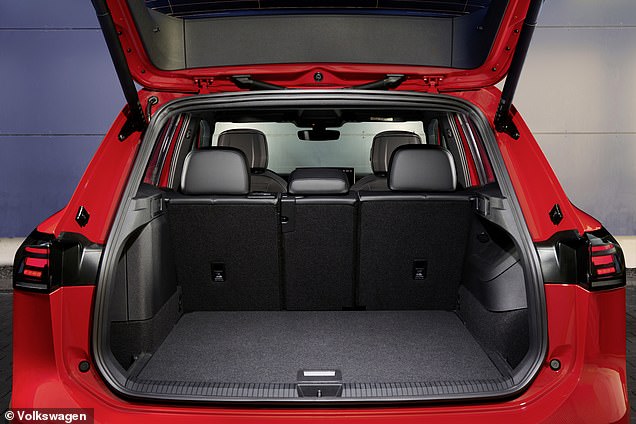VW updates its best-selling car: how much the new Tiguan will cost – and what buyers will get
Since the first Volkswagen Tiguan was introduced in 2007, the family SUV has been the German car giant’s best-selling model.
So when a new version comes along, bosses want to make sure they have all the right ingredients to continue that success.
The third-generation Tiguan will hit showrooms from next year and among the changes will include a plug-in hybrid (PHEV) powertrain offering three times the average daily mileage in Britain in electric mode.
Here we detail all the new features and reveal how much the Tiguan will cost when the first examples arrive on British soil from next spring.
VW’s best-selling model for more than a decade is getting a makeover: this is the new third-generation Tiguan SUV – and ultimately the last to be sold with a combustion engine under the hood
How popular is the Tiguan? The first two generations sold more than 7.5 million units worldwide in a 15-year cycle – a period during which demand for SUVs soared, leaving every other vehicle segment in its wake.
Tiguan buyers will be able to order from a completely new engine range from next year and benefit from a range of new technologies crammed into the interior of the family car.
Arguably the last Tiguan to be unveiled with combustion engines under the bonnet, this third-generation car will come with a choice of TDI turbo diesels, TSI turbo petrols, eTSI mild-hybrids and, finally, a new plug-in ‘eHybrid’ system.
They are all mated to VW’s proven and market-leading DSG automatic gearbox.
As with the new Passat Estate unveiled last month, transmission controls have been moved to a lever behind the steering wheel instead of the traditional stick in the center console.
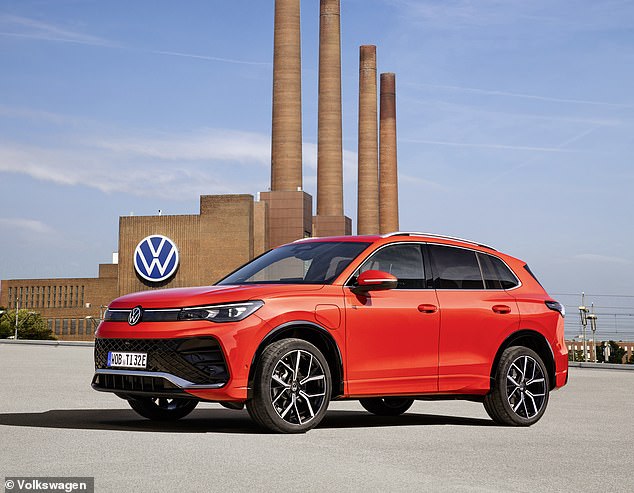
VW has sold more than 7.5 million Tiguans since its launch in 2007. This makes the brand the bestseller worldwide
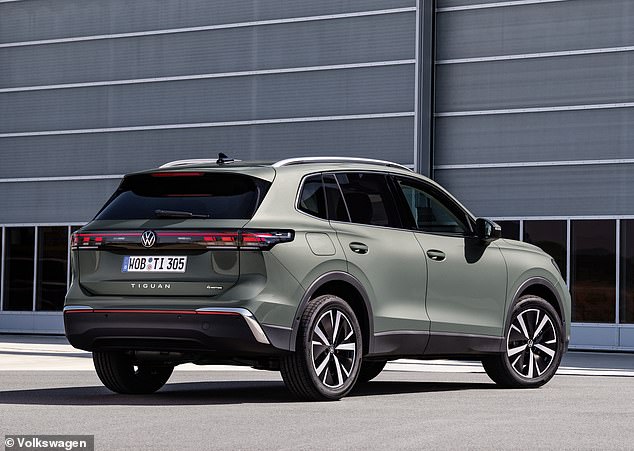
The third-generation car will have a choice of engines: TDI turbodiesels; TSI turbo petrol; eTSI mild hybrids; and a plug-in ‘eHybrid’
The latter engine is a stepping stone in Volkswagen’s transition to electric vehicles.
That’s because the PHEV can travel 100 kilometers when its 19.7 kWh battery is fully charged. And thanks to DC fast-charging capability, it should take minutes (not hours) to add more range to electric mode.
Because the British travel an average of 12,000 kilometers per year, this equates to a daily use of 32 kilometers per day.
Essentially, this means that the Tiguan PHEV can drive as a full-fledged electric car for almost three days before the average user has to rely on the combustion engine without charging.
However, if you want to take your Tiguan off-road – which, to be honest, very few Brits do – you’ll have to opt for the 4Motion 2.0-litre diesel or petrol.
As for the looks, the design is sleeker all around in an effort to make the boxy proportions as aerodynamic as possible.
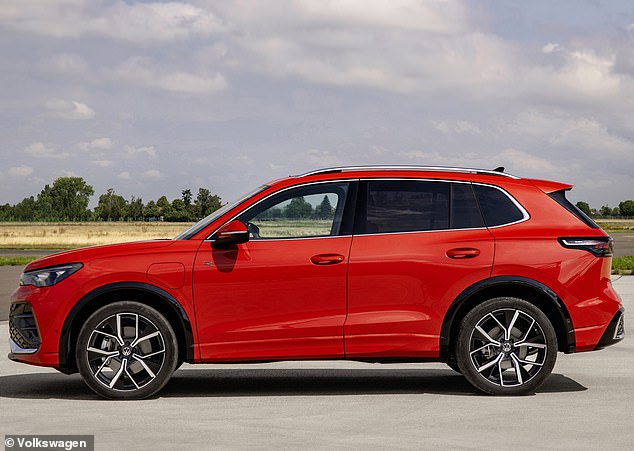
The PHEV can travel 100 kilometers when its 19.7 kWh battery is fully charged. Brits travel an average of 20 miles a day
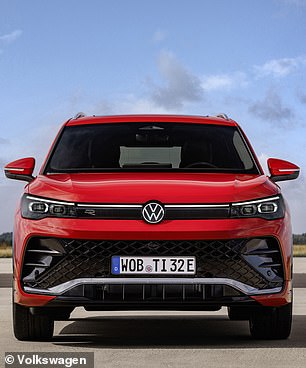
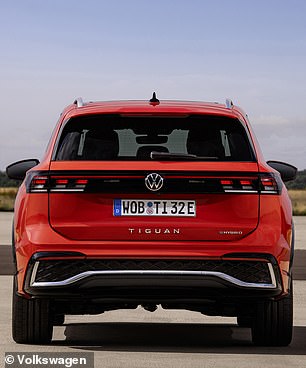
The front of the Tiguan features the matrix LED headlights from the electric ID series. The taillight cluster covers the entire trunk panel and is similar to the smaller T-Cross
The front shares the familiar face of its ‘ID’ range of electric vehicles, with a large lower grille and the HD matrix LED lighting of its battery-powered sister models.
Looking to the rear, the Tiguan has a small spoiler above the rear window and a headlight cluster similar to that of the smaller T-Cross.
In terms of dimensions, VW has made the new SUV 30mm longer than before, which should translate into slightly more interior space.
The boot has also been increased by 37 liters on non-PHEV models, bringing the total to 652 liters.
Inside, the centerpiece is the new infotainment system, VW’s latest MIB4 system.
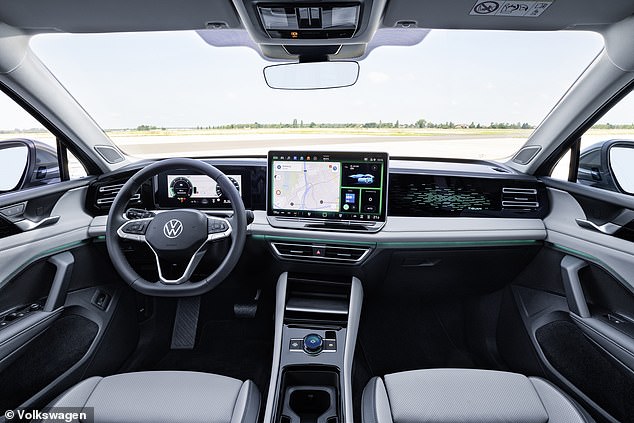
Volkswagen promises more space than before, including improved headroom all around compared to the outgoing Tiguan
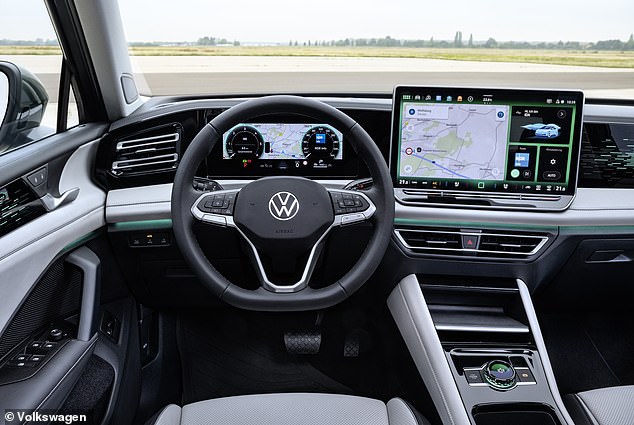
The Tiguan gets a 12.9-inch infotainment display as standard. However, upgrade to higher trim levels and you get a 15-inch laptop-sized screen
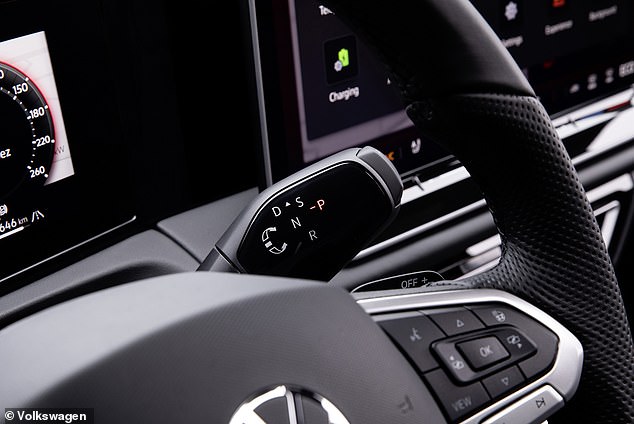
Each version comes with VW’s automatic DSG gearbox. As with the new Passat Estate unveiled last month, the controls have been moved to a lever behind the steering wheel
As standard this means a 12.9-inch screen, but higher trim levels get a laptop-sized 15-inch screen.
These compliment a 10.25-inch digital instrument cluster, which can be customized into four different display models.
Another smart feature is a rotary knob in the center console that allows users to adjust the ‘ambiance’ of the car. This means that with a turn of the control knob you can tune the Tiguan to the sportiest setting for the chassis and powertrain, with the cabin lighting up red. Alternatively, this can be toned down to more calming tones and vehicle response.
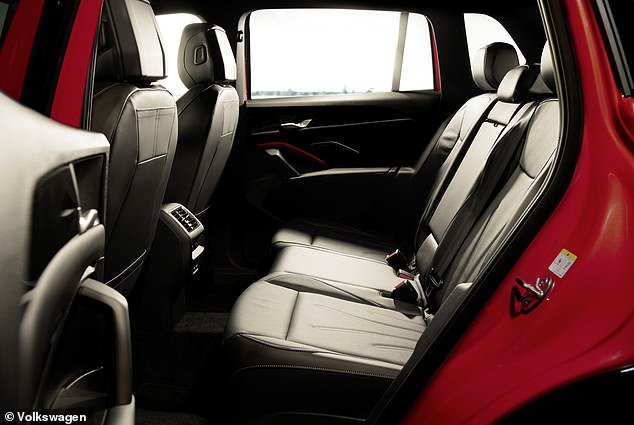
By extending the length and wheelbase of the Tiguan, Volkswagen has increased the legroom for the rear passengers
Boot space has also been increased by 37 liters on non-PHEV models, bringing the total to 652 liters
What most of you want to know now is how much it will cost…
No UK specs have been clarified yet, although in Germany the entry-level version starts from €36,600, which is around £31,300. However, today’s cheapest DSG-equipped second-generation version currently costs £33,650 in the UK, so expect a small price increase when it eventually arrives.
The premium will be much higher for the PHEV version.
The third generation Tiguan will go on sale in its native country from February 2024 and in Britain from spring 2024.
Some links in this article may be affiliate links. If you click on it, we may earn a small commission. That helps us fund This Is Money and keep it free to use. We do not write articles to promote products. We do not allow a commercial relationship to compromise our editorial independence.

